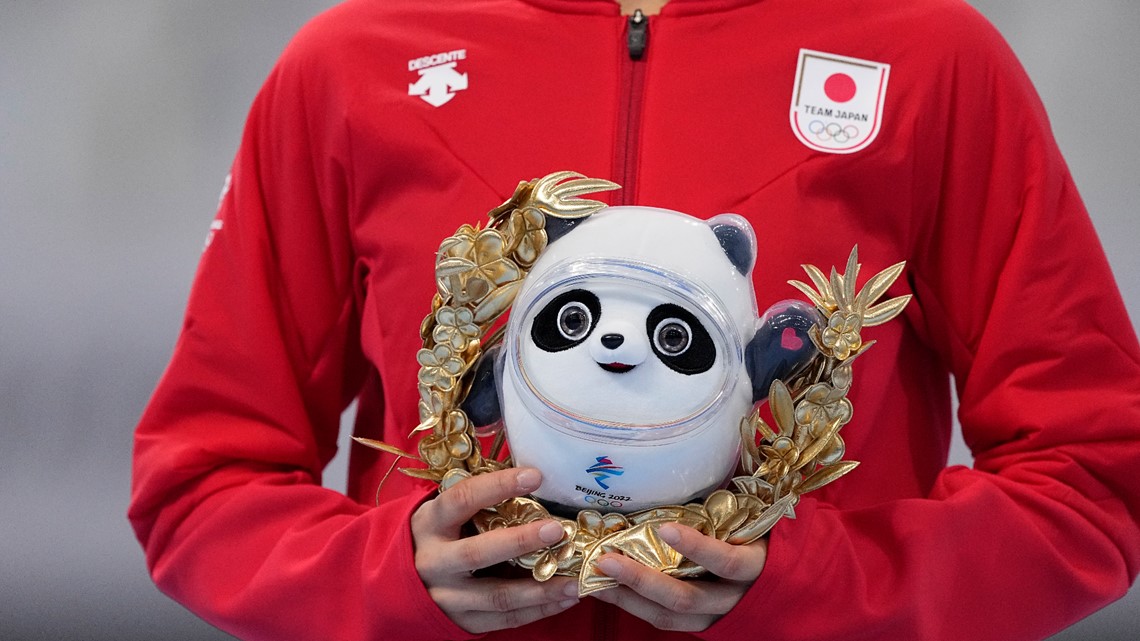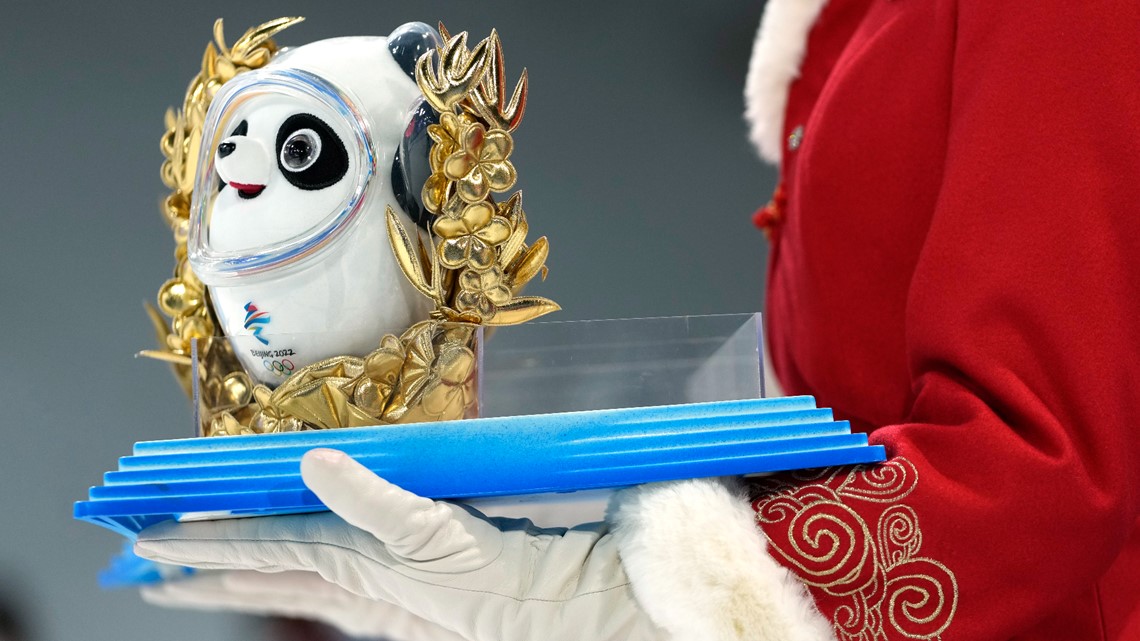BEIJING, China — When most champions get off the slopes or the ice at the Beijing Olympics, they are handed Bing Dwen Dwen, the chubby panda mascot of the Games.
Where are the medals? They usually come later at a special ceremony — a system introduced in 1988 at the Calgary Games.
But immediately after competition, the winning athletes in Beijing receive a plush toy panda, stuffed inside a plastic shell that is meant to represent ice. Bing, in fact, means ice in Chinese. The toy is also adorned with a golden wreath.
Canadian snowboarder Mark McMorris won his third Olympic bronze medal on Monday and said he loved the prize that came with it.
“I always claimed back in the day that my spirit animal is a panda. I love pandas,” he said.


A similar ritual unfolded at the Pyeongchang Games four years ago. There, immediately after winning gold, silver or bronze, medalists got Soohorang, a striped white tiger that served as the mascot for those Games.


The tradition of giving a mascot to the winners has existed for more than a decade at the Youth Olympics.


Why do Olympians bite their medals?
By Travis Pittman
One of the typical yet iconic images you see at the Olympic games is the winners standing on the podium, biting their newly-won neckwear. But how did this come about?
We saw it repeatedly at the Tokyo Olympics. Even the official Twitter account for the Summer Games had to remind people the medals weren't edible.
"We just want to officially confirm that the #Tokyo2020 medals are not edible," the Tokyo 2020 account tweeted. "Our [Olympic] medals are made from material recycled from electronic devices donated by the Japanese public. So, you don't have to bite them... but we know you still will."


The modern-day answer as to why athletes bite their medals is one that may not seem all that interesting.
Ever watch an awards show red carpet when the photographers are yelling at the well-dressed stars to look their way and smile, pose or whatever else? According to multiple accounts from Olympians, the same thing happens at the games. Photographers hound athletes to "bite" their medals.
“It’s become an obsession with the photographers,” David Wallechinsky, president of the International Society of Olympic Historians, told CNN in 2012. “I think they look at it as an iconic shot, as something that you can probably sell. I don’t think it’s something the athletes would probably do on their own.”
There's also an older answer to the question. Money handlers more than a century ago would bite down on coins to ensure they weren't counterfeit. Real gold is softer than human teeth and, therefore, would be left with a mark if bitten, according to CNN.

